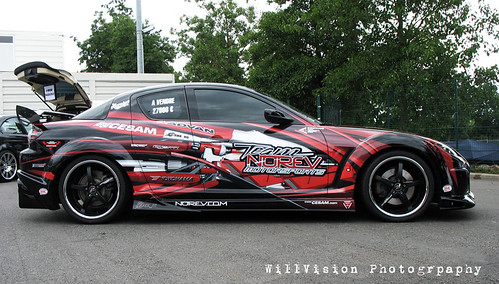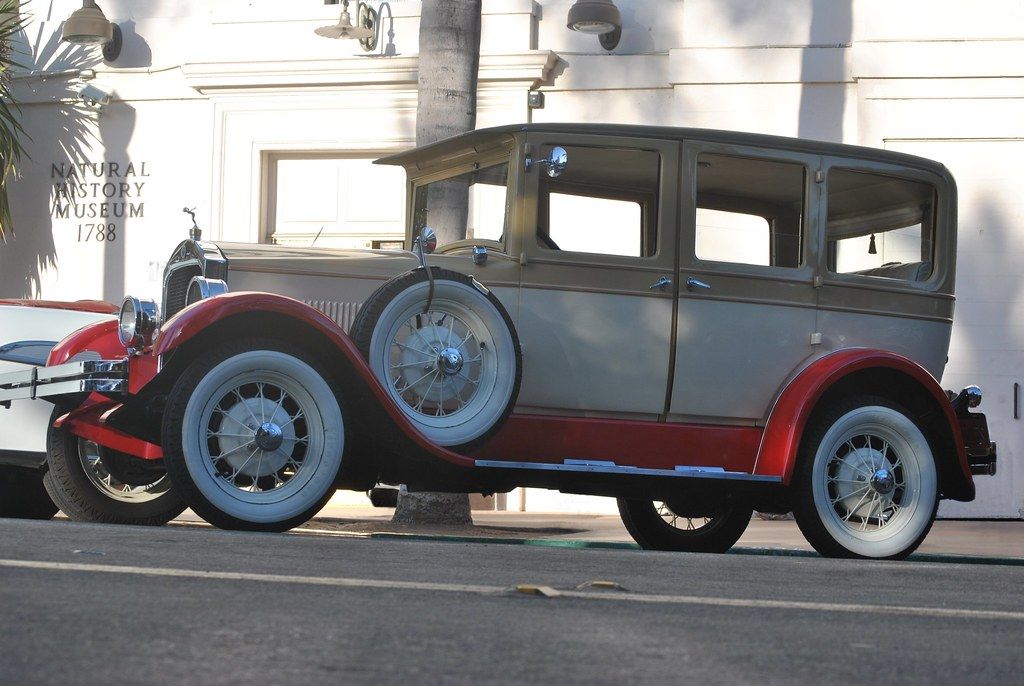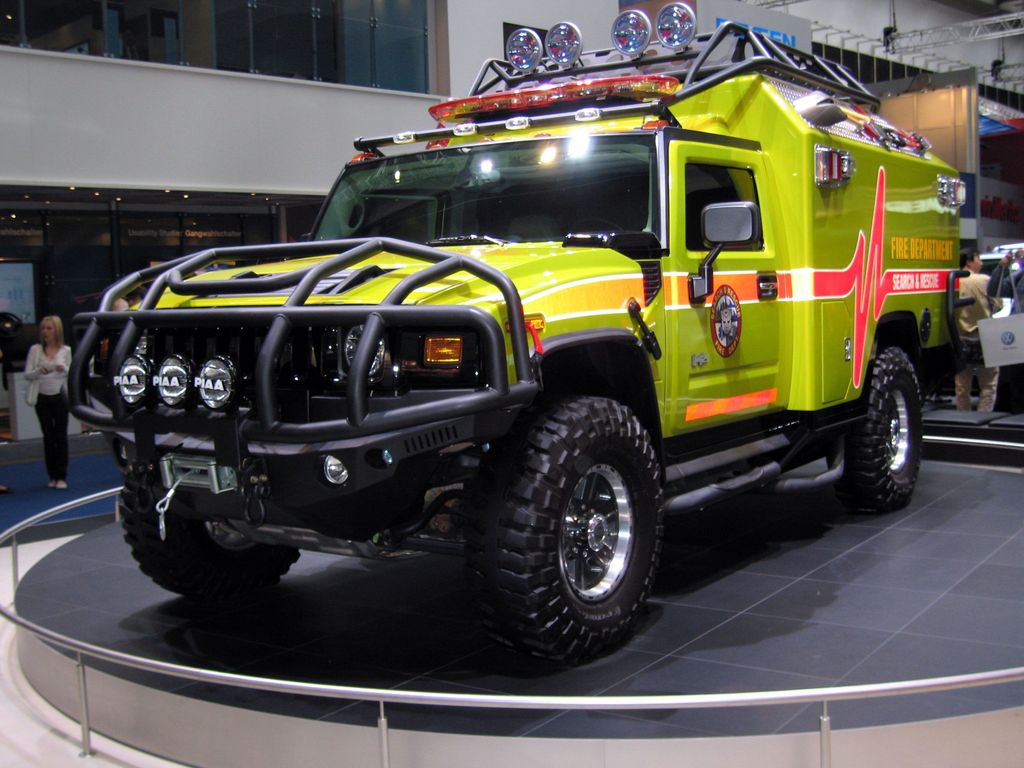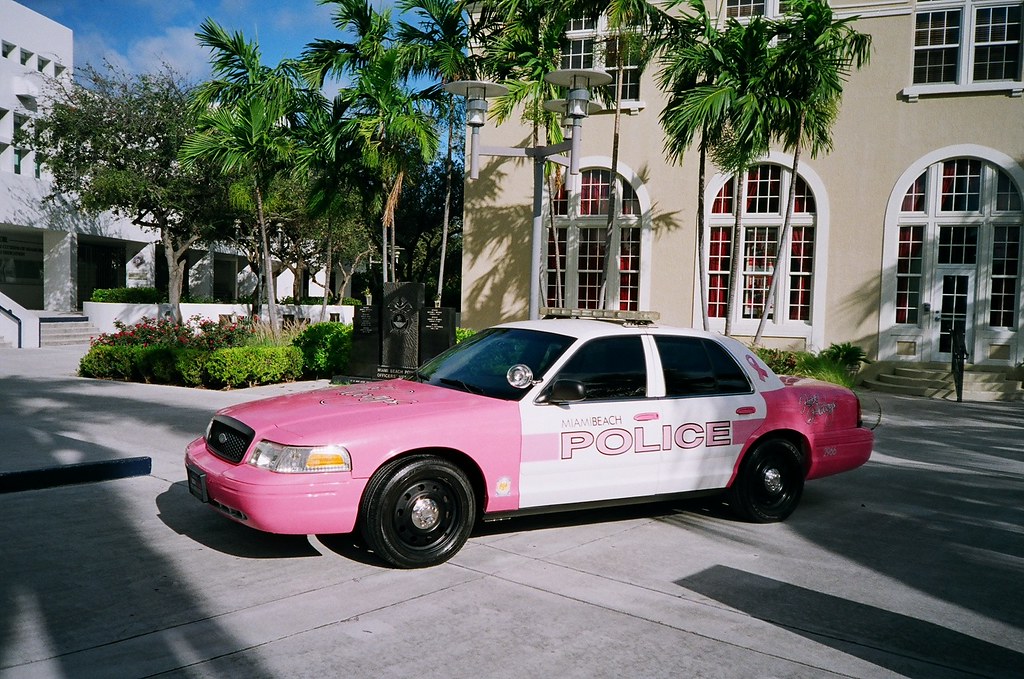
Few machines command respect and recognition on the world’s streets quite like the police car. From the moment the automobile became a reliable means of transportation, it was clear that these vehicles would be indispensable tools for law enforcement, enabling officers to patrol vast territories and respond to calls with unprecedented efficiency. Yet, for all their ubiquitous presence, these aren’t always purpose-built vehicles. More often than not, they are standard production models, meticulously adapted for the demanding rigors of police service, making them popular and often iconic straight from the showroom floor.
While police vehicles span a global spectrum of designs, American police cars have carved out a truly unique identity. For decades, the landscape of law enforcement fleets has seen fierce competition between major manufacturers. While Ford and Chevrolet have certainly had their formidable contenders, the Chrysler Corporation—now part of Stellantis—has, at various crucial junctures, dominated the scene, imbuing their police models with a distinctive character that has made them particularly recognizable. As one of “The Big Three,” Chrysler and its Dodge and Plymouth brands have consistently accounted for a substantial portion of North American auto sales, along with a significant presence elsewhere. This deep industry footprint means that Chrysler vehicles, affectionately known as Mopars, have been some of the most common sights on our roads, a fact that extends directly to their legendary police variants. These officer-driven Mopar vehicles have etched themselves into the fabric of automotive history, becoming synonymous with enforcement and pursuit.
From the very first purpose-built police packages that brought specialized engineering to the force, through the powerful sedans that patrolled our highways, to the rugged utility vehicles tackling the toughest terrains, Mopar has consistently delivered vehicles that were not just tools, but extensions of the officers who drove them. These vehicles represent a fascinating blend of civilian automotive innovation and the specific demands of police work, showcasing engineering prowess, design evolution, and a relentless pursuit of performance and durability. Join us as we cruise down memory lane, shining a spotlight on some of the most iconic Chrysler, Plymouth, and Dodge police cars ever made, vehicles that left an indelible mark on both automotive culture and the annals of law enforcement.

1. **1956–1959 Dodge Pursuit**Our journey into the annals of Mopar police history begins in the late 1950s with a truly groundbreaking vehicle: the 1956–1959 Dodge Pursuit. While it may not instantly spring to mind as the most recognized Dodge car ever created, its significance is monumental. This particular model attains its iconic status for a very specific reason: it heralded the introduction of the very first police package from Chrysler, along with establishing the now-legendary “Pursuit” moniker. Before this, police departments had certainly utilized Dodge and Plymouth vehicles for years, but these were always regular production models that departments themselves had to outfit for patrol duty. The mid-fifties, however, saw cars becoming increasingly faster and easier to drive at high speeds, creating an undeniable need for law enforcement to keep pace.
The inaugural Chrysler police car to benefit from this dedicated package was the Dodge Coronet 230 Pursuit. This wasn’t merely a cosmetic upgrade; it offered a comprehensive suite of enhancements designed to transform a standard sedan into a formidable police asset. The list of modifications was extensive and thoughtfully engineered for the demands of police work. It included heavy-duty brakes, stiffer springs, and shock absorbers to handle rigorous use and varied road conditions. A faster steering ratio provided quicker, more responsive handling, crucial for high-speed maneuvers. Specialized roof bracket inserts were integrated to support externally mounted lights, antennas, and sirens, ensuring seamless equipment installation. Inside, practicality reigned with stain-resistant floor mats replacing standard cut-pile carpeting, designed for longer wear and easier maintenance in a demanding environment. Furthermore, a high-output electrical system was installed to power the myriad of police-specific accessories.
Under the hood of the 1956 Coronet 230 Pursuit throbbed a potent 315 Red Ram Hemi V8 engine, fed by a Carter four-barrel carburetor, capable of producing a robust 260 horsepower. This was a significant output for its time, providing officers with the necessary power for pursuit and patrol. As the years progressed within this generation, even more powerful options became available. The D-500 package, for instance, featured a dual-carburetor 361 V8 engine that unleashed an impressive 320 horsepower. However, few departments opted for this top-tier performance due to the higher cost and increased fuel consumption, a practical consideration that often outweighed outright speed in fleet purchases. The 1959 Dodge Coronet, designed by the famed Virgil Exner, was undoubtedly among the most stylish police cruisers of its era, boasting stout unibody construction, a robust TorqueFlite transmission, and torsion bar suspension, with a Super D-500 version offering 345 horsepower.
Car Model Information: 2019 Dodge Charger Police
Name: Dodge Charger
Manufacturer: DaimlerChrysler,Chrysler LLC,Chrysler Group LLC,FCA US LLC,Stellantis North America
Production: April 2005
ModelYears: 2006–2010 (LX),2011–2023 (LD)
Assembly: Brampton, Ontario
Class: Full-size car
BodyStyle: sedan (car)
Platform: Chrysler LX platform
Layout: Front-engine, rear-wheel-drive layout
Predecessor: Dodge Intrepid
Successor: Dodge Charger (2024)
Categories: 2000s cars, 2010s cars, 2020s cars, All-wheel-drive vehicles, All articles needing additional references
Summary: The sixth and seventh-generation Dodge Charger are full-size four-door sedans, first introduced at the 2005 North American International Auto Show and built by American automobile manufacturer Stellantis North America, a subsidiary of Stellantis. It is available in rear-wheel drive or all-wheel drive drivetrains. The Charger was developed to continue the Dodge Charger line with its muscle car heritage, and replaced the Dodge Intrepid as Dodge’s full-size sedan. The seventh-generation Charger debuted for the 2011 model year.
Get more information about: Dodge Charger (2006)
Buying a high-performing used car >>>
Brand: Dodge Model: Pursuit
Price: $13,991 Mileage: 130,170 mi.
Read more about: Gone But Not Forgotten: 14 Beloved Cars That Vanished Unexpectedly from Production
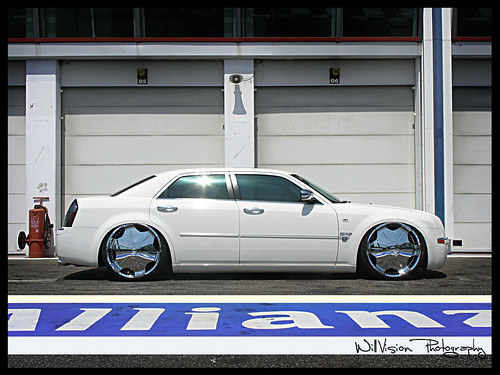
2. **1961–1964 Chrysler Enforcer**As the early 1960s dawned, a new chapter opened in Mopar’s police vehicle narrative, signaling a move towards offering specialized packages across more of its brands. By the time John F. Kennedy had taken office, Dodge, DeSoto, and Plymouth were already offering their respective police packages. However, 1961 marked a notable expansion: the introduction of the first police car from the higher-end Chrysler marque, dubbed the Chrysler Enforcer. This was a bold move, bringing the traditionally more upscale Chrysler brand into the realm of law enforcement, and it delivered a vehicle that was distinctly different from its Dodge and Plymouth counterparts.
The Chrysler Enforcer was based on the full-size Newport sedan, which meant police departments received a truly large and comfortable car. This generous stature provided officers with ample room to carry essential equipment and, equally importantly, to transport suspects to and from the station with relative ease. The sheer size of the vehicle contributed to an imposing presence on the road, a psychological advantage in police work. But it wasn’t just about space and comfort; the Enforcer was also blessed with considerable power, thanks to the robust 383 cubic inch V8 engines that lay beneath its hood. This engine ensured that despite its size, the Enforcer could hold its own in pursuit situations.
A prime example of the Enforcer’s capabilities and its customized applications can be found in its adoption by the California Highway Patrol (CHP). Always seeking an edge in their high-speed pursuits across the vast expanses of California’s roadways, the CHP specifically requested a hotter cam and a Carter carburetor, opting for it over the standard Holley unit, to give their Enforcers a significant boost in power. This bespoke tuning resulted in CHP cars that could achieve a top speed of 130 mph – a truly remarkable figure for a large sedan of that era, and one that provided officers with a critical advantage on those long stretches of California pavement. However, despite its impressive performance and undeniable presence, the Enforcer proved to be a relatively short-lived model. Chrysler ceased production of the Enforcer with the 1964 model year, subsequently re-entrusting the production of service vehicles primarily to its Dodge and Plymouth divisions.

3. **1974–1978 Dodge Monaco**When we talk about iconic police cars, especially those etched into the public consciousness through popular culture, the 1974–1978 Dodge Monaco holds a special, almost legendary, place. Although the Monaco model itself was in production from 1965 through 1978, with a brief, somewhat unconventional revival in the ’90s as a Renault-based badge-engineered model, it’s really the second generation, specifically the 1974-1978 models, that merits its iconic designation. This was a full-size sedan and wagon, and frankly, the second generation was particularly large and, by some measures, not always considered the most aesthetically pleasing or inherently noteworthy vehicle of its time. It was, in essence, a big ’70s car designed to move families around.
Yet, this seemingly ordinary, capacious sedan achieved unlikely stardom on the silver screen, becoming perhaps the most famous cop car in cinematic history: the Bluesmobile from “The Blues Brothers” movie. The film, released in 1980, immortalized the 1974 Dodge Monaco with Elwood Blues’ now-famous monologue describing its capabilities: “It’s got a cop motor, a 440 cubic inch plant, it’s got cop tires, cop suspensions, cop shocks. It’s a model made before catalytic converters, so it’ll run good on regular gas. What do you say, is it the new Bluesmobile?” This dialogue perfectly captured the essence of the police package, emphasizing its heavy-duty components and raw power. The Monaco was then subjected to perhaps the most expensive movie car crash scene in history, with a staggering 104 cars destroyed during filming, 13 of which were Bluesmobiles.
Adding to the Monaco’s enduring stardom was its prominent role on the small screen in the wildly popular television show, “The Dukes of Hazzard.” The famously bumbling and often dim-witted Sheriff Rosco P. Coltrane, the chief lawman of Hazzard County, was almost invariably seen behind the wheel of one of several Monaco models throughout the series, always with his loyal hound dog, Flash, by his side. The 1977 Dodge Monaco, in particular, also saw serious police duty, with the California Highway Patrol and the Washington State Patrol both using 1977 models as pursuit vehicles. These formidable cars were equipped with 440 cubic-inch V8s, churning out 230 horsepower and 330 lb-ft of torque, making the Monaco 440 the most powerful car of its year. Its dual life as a reliable workhorse for real law enforcement and a cinematic icon solidified its place in automotive and cultural history.
Car Model Information: 2021 Dodge Durango SRT Hellcat
Name: Dodge Monaco
Caption: 1968 Dodge Monaco four-door hardtop
Manufacturer: Dodge
Related: Dodge Polara
ModelYears: 1965–1977 (full-size),1977–1978 (intermediate) , 1990–1992 (full-size)
Predecessor: Dodge Custom 880
Successor: Dodge St. Regis
Categories: 1970s cars, 1990s cars, All articles needing additional references, All articles that may contain original research, All articles with unsourced statements
Summary: The Dodge Monaco is an automobile that was marketed by the Dodge division of Chrysler Corporation. Introduced as the flagship of the Dodge product line, the Monaco was introduced for the 1965 model year to replace the Custom 880, then later joined as a sub-model of the Dodge Polara. During its production, the Monaco was offered in several body configurations, including two-door and four-door hardtop sedans, four-door sedans, two-door convertibles, and station wagons.
From 1965 to 1977, three generations of the Monaco were produced with the full-size Chrysler C platform. For 1977 and 1978, Dodge shifted the Monaco to the intermediate Chrysler B platform, effectively downsizing the model line. For 1979, the model line was redesigned and renamed the Dodge St. Regis.
After a 12-year hiatus, the full-size Monaco was revived for the 1990 model year as the flagship Dodge sedan, replacing the Diplomat. This was a rebadged version of the Eagle Premier which was developed by Renault and American Motors Corporation (AMC). The Monaco was replaced by the Dodge Intrepid for the 1993 model year.
It is named after the Principality of Monaco.
Get more information about: Dodge Monaco
Buying a high-performing used car >>>
Brand: Dodge Model: Monaco
Price: Not Priced Mileage: 29,236 mi.
Read more about: Beyond Nostalgia: 14 Classic ‘Boomer’ Cars Gen Z Drivers Are Steering Clear Of (And Why!)

4. **1975–1978 Plymouth Fury A38 Pursuit**Continuing our exploration of Mopar’s influential police vehicles, we turn our attention to the 1975–1978 Plymouth Fury A38 Pursuit. This model stands as a quintessential example of American law enforcement vehicles from the mid-to-late 1970s, showcasing Plymouth’s dedication to providing robust and capable platforms for police duty. The seventh-generation Plymouth Fury, while serving as a civilian family car, was thoroughly transformed into a formidable police car when equipped with the specialized A38 Police Pursuit Package. This was not a mere branding exercise but a serious engineering effort to meet the unique demands of police work, from high-speed chases to prolonged idling and rugged daily use.
The A38 Police Pursuit Package meticulously addressed the critical areas of performance and durability that law enforcement agencies required. Central to its enhanced capabilities were the heavy-duty tuned suspensions. These weren’t simply stiffer springs; they were carefully calibrated to manage the significant weight of police equipment, the stresses of high-speed maneuvers, and the varied road conditions encountered during patrol. This bespoke suspension system ensured improved handling, stability, and overall control, giving officers confidence whether they were navigating city streets or engaging in spirited pursuits.
Further enhancing the Fury A38’s performance and resilience were its heavy-duty wheels. These weren’t standard consumer-grade rims but robust 7-inch-wide wheels designed to withstand extreme forces and provide a solid foundation for specialized police tires. These wider, stronger wheels were paired with special fabric-belted radial tires, a significant upgrade that offered superior grip, durability, and high-speed stability compared to conventional tires of the era. This combination of heavy-duty suspension, wheels, and tires formed a formidable package, enabling the Fury A38 to perform reliably under the most strenuous conditions. Its presence on the streets of America during the late 70s cemented its legacy as a true workhorse, a testament to Plymouth’s commitment to equipping the nation’s police forces with dependable and effective pursuit vehicles, making it an undeniable icon of its era.
Car Model Information: 1960 Plymouth Fury
Name: Plymouth Fury
Caption: 1959 Plymouth Sport Fury
Manufacturer: Plymouth (automobile)
Aka: Plymouth Sport Fury (1959, 1962–1971),Plymouth VIP (1966–1969)
Production: 1958–1978
ModelYears: 1959–1978
Assembly: bulleted list
Class: Full-size,Mid-size,Full-size,Mid-size,Full-size,Mid-size
Layout: FR layout
Predecessor: Plymouth Belvedere,Plymouth Plaza,Plymouth Savoy
Successor: Plymouth Gran Fury,Plymouth Gran Fury
Sp: us
Categories: 1960s cars, 1970s cars, All articles needing additional references, Articles needing additional references from December 2018, Articles with short description
Summary: The Plymouth Fury is a model of automobile that was produced by Plymouth from 1955 until 1989. It was introduced for the 1956 model year as a sub-series of the Plymouth Belvedere, becoming a separate series one level above the contemporary Belvedere for 1959. The Fury was a full-size car from 1959 until 1961, then a mid-size car from 1962 until 1964, again, a full-size car from 1965 through 1974, and again, a mid-size car from 1975 through 1978. From 1975 until 1977, the Fury was sold alongside the full-size Plymouth Gran Fury. In 1978, the B-body Fury was the largest Plymouth, and by 1979, there was no large Plymouth. This product gap was filled in 1980 with the R-body Gran Fury, followed by the M-body Fury in 1982. Production of the last V8, RWD Plymouth Fury ended at the Kenosha Main assembly plant in Kenosha, WI, on December 23, 1988. Unlike its sibling brand, Dodge, Plymouth would not live to see the resurgence of the large, V8/RWD sedan.
Get more information about: Plymouth Fury
Buying a high-performing used car >>>
Brand: Plymouth Model: Fury
Price: $75,000 Mileage: 44,509 mi.
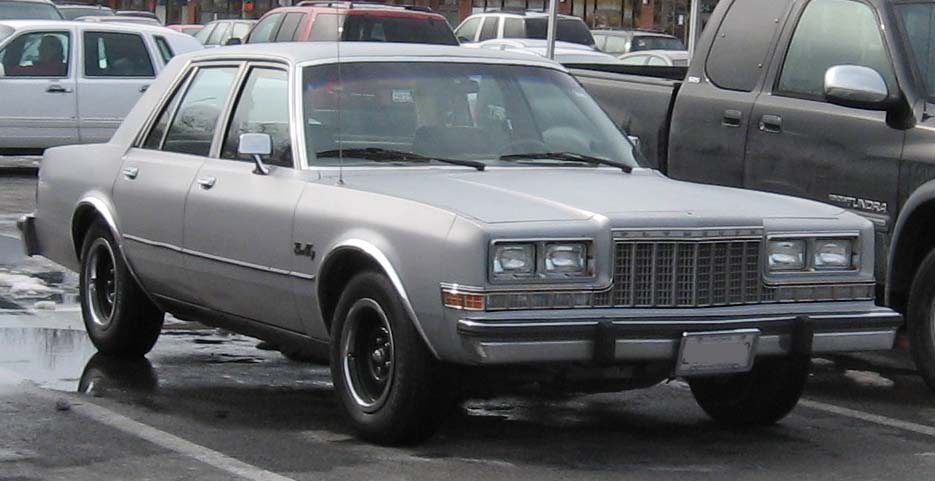
5. **1980–1989 Plymouth Gran Fury/Dodge Diplomat/Chrysler New Yorker (M-Body Trio)**As the 1980s dawned, Chrysler introduced a new platform that would become one of the most enduring and ubiquitous police vehicles of its time: the M-body sedan. First seen in 1977, this versatile platform underpinned several new cars upon its introduction, but it truly came into its own for law enforcement starting in 1980 with the trio of stout and dependable models: the Dodge Diplomat, the Plymouth Gran Fury, and the Chrysler New Yorker. While these cars found a broad appeal among middle-class families, their design and robust construction made them particularly attractive to fleet operators, especially police departments across the United States. This M-Body trio swiftly became synonymous with American policing throughout the decade.
During this period, both Ford and Chevrolet continued to offer their own police cars, yet the Mopar M-body variants carved out a distinct and dominant niche. These vehicles were legendary for striking fear into the hearts of careless drivers through the early 1990s, only being retired as newer models emerged. Their popularity among American police departments in the ’80s was immense, with the Dodge Diplomat emerging as the best-selling model by a significant margin. Departments often preferred these Mopars because their slightly smaller size and superior maneuverability offered an advantage over some of the competition’s larger, heavier offerings. Furthermore, performance testing frequently demonstrated them to be quicker off the line and more agile in urban environments, crucial traits for effective patrol and pursuit.
The M-Body variants became an integral part of the entire American 1980s aesthetic, frequently appearing in TV shows and movies from or about the period, faithfully replicating their real-world presence. They were a common sight patrolling the streets of the biggest cities across the nation. Famously, the New York Police Department, one of the largest police forces in the world, deployed Mopars extensively throughout this era, cementing their image as the quintessential ’80s cop car. The combination of their practical size, respectable performance, and rugged durability made the Gran Fury, Diplomat, and New Yorker an undeniable and deeply entrenched icon in the history of American law enforcement vehicles, a true testament to Chrysler’s understanding of police needs during a pivotal decade.
Car Model Information: 2019 Volkswagen Atlas 3.6L SE
Name: Plymouth Gran Fury
Caption: 1986 Plymouth Gran Fury Salon (M-body)
Manufacturer: Plymouth (automobile)
Production: 1974–1977 (C-body),1979–1981 (R-body),1981–December 1988 (M-body)
ModelYears: 1975–1977 (C-body),1980–1981 (R-body),1982–1989 (M-body)
Assembly: Windsor, Ontario,Detroit, Michigan,St. Louis, Missouri,Kenosha, Wisconsin
Layout: Front-engine, rear-wheel-drive layout
Predecessor: Plymouth Fury
Successor: Dodge Monaco#Fifth generation (1990–1992)
Categories: 1970s cars, 1980s cars, All articles needing additional references, Articles needing additional references from January 2019, Articles with short description
Summary: The Plymouth Gran Fury is a full-sized automobile that was manufactured by Plymouth from 1975 to 1989 model years. The nameplate would be used on successive downsizings, first in 1980, and again in 1982, through what would originally have been intermediate and compact classes in the early 1970s, all with conventional rear-wheel drive layouts. By the time Chrysler ended M-body production in December 1988 (1989 model year), they were Chrysler’s last remaining rear-wheel drive cars, with a V8 and carburetor, a configuration used since the mid-1950s. Plymouth did not have another rear-wheel drive car until the 1997 Prowler roadster.
Before 1975, the top line models in Plymouth’s Fury series were known as the “Fury Gran Coupe” and “Fury Gran Sedan”. The Fury Gran Coupe model was introduced in 1970 as a highly trimmed pillared coupe. It moved to the two-door hardtop body for 1971, when a “Fury Gran Coupe” hardtop sedan was also available, renamed “Fury Gran Sedan” for 1972. The Gran Coupe and Gran Sedan models continued in 1973.
Get more information about: Plymouth Gran Fury
Buying a high-performing used car >>>
Brand: Plymouth Model: Gran Fury
Price: $15,988 Mileage: 72,895 mi.

6. **1974–1993 Dodge Ramcharger**While sedans have traditionally formed the backbone of police fleets, many law enforcement agencies, particularly those operating in the vast, often rugged, and mountainous regions of the American West, found typical patrol sedans to be woefully inadequate for their jurisdictions. In these challenging environments, characterized by open terrain, unpaved roads, and the frequent necessity to travel away from conventional roadways, agencies needed vehicles that could adequately traverse rough topography. To properly equip the officers charged with patrolling these demanding areas, many departments shrewdly opted for the Dodge Ramcharger, a robust four-wheel-drive SUV built on the dependable Dodge Ram pickup truck platform.
What makes the Ramcharger’s story within police service particularly interesting is the absence of specific, factory-offered police packages for this model. This means that police and sheriff departments acquired base models directly from Dodge and subsequently had them custom-equipped for service duty by aftermarket upfitters or their own in-house mechanics. The early models of the Ramcharger were remarkably well-suited for this conversion, as they came with minimal added equipment from the factory—even the passenger seat and rear bench were often optional. This stark, utilitarian approach suggests that Dodge may have intuitively known these vehicles were destined for lives as rugged workhorses, adaptable to a wide array of specialized roles.
These Ramchargers proved to be excellent vehicles for the specific challenging places in which they were needed. Imagine an officer in the mountains of Montana or Colorado, needing to be dispatched to assist hikers or campers stranded deep in the wilderness, or to pursue fugitives cutting across rural tracts of land while on the lam. The Ramcharger’s four-wheel-drive capability, high ground clearance, and durable construction provided the necessary tools for such tasks, allowing officers to reach areas inaccessible to conventional sedans. However, as the era of the modern SUV and crossover began to take hold, these rugged, truck-based Ramchargers were eventually discontinued, replaced by more contemporary models that often featured factory-available police packages, marking the end of an era for this particular Mopar icon that pioneered utility in police work.
Car Model Information: 1988 Dodge Ramcharger
Name: Dodge Ramcharger
Aka: Plymouth Trail Duster
Manufacturer: Chrysler Corporation
Production: 1974–2001
Assembly: Warren, Michigan,United States
Class: Full-size,SUV
Platform: Front-engine, rear-wheel-drive layout,rear-wheel drive
BodyStyle: SUV
Predecessor: Dodge Town Panel and Town Wagon
Successor: Dodge Durango
Categories: 1980s cars, 1990s cars, All-wheel-drive vehicles, All articles needing additional references, Articles needing additional references from June 2019
Summary: The Dodge Ramcharger is a large sport utility vehicle built by Dodge from 1974 to 1993, based on a shortened-wheelbase version of the Dodge D series/Ram pickup chassis. A Plymouth version, named the Plymouth Trail Duster, offered from 1974 to 1981, was Plymouth’s only SUV.
The Ramcharger was mostly produced as a two-door, 4×4 vehicle, although a two-wheel-drive version was available. As a full-size SUV, it competed with the Chevrolet K5 Blazer and the 1978–1996 Ford Bronco.
The Ramcharger was discontinued at the end of the 1993 model year in North America. In Mexico, however, production continued until 1996. It was then brought back from 1999 to 2001, still as a two-door SUV and sharing the design of the contemporary Ram pickup. Approximately 30,000 were produced, with all examples being two-wheel-drive only.
In November 2023, Stellantis announced that the Ramcharger nameplate would be revived for a plug-in hybrid and extended-range electric vehicle truck version of the 2025 Ram 1500.
Get more information about: Dodge Ramcharger
Buying a high-performing used car >>>
Brand: Dodge Model: Ramcharger
Price: $18,990 Mileage: 89,490 mi.

7. **2011–present Dodge Charger Pursuit**Transitioning from the classic workhorses of yesteryear to the formidable machines patrolling our streets today, the 2011–present Dodge Charger Pursuit stands as a testament to Mopar’s enduring commitment to law enforcement. In an automotive landscape where traditional sedans are increasingly rare, especially from domestic manufacturers, the Charger Pursuit holds a unique and critical position. It’s not just a car; it’s the only domestic police car available today that still offers departments a high-performance sedan option over an SUV for their patrol needs. This current iteration, tracing its roots back to 2005 with a major redesign in 2011, showcases an extraordinary longevity in an industry often characterized by rapid model refreshes, underlining its proven reliability and effectiveness.
Beneath its aggressive, contemporary styling, the Charger Pursuit offers a powertrain lineup that truly sets it apart. While base models come equipped with potent V6 engines producing a healthy 300 horsepower, the true muscle car spirit emerges with the optional HEMI V8 engines, churning out an impressive 370 horsepower. These figures not only provide officers with ample power for high-speed pursuits and rapid responses but actually exceed anything offered even during the fabled muscle car era of the late 1960s. Moreover, these modern powerplants achieve remarkable fuel efficiency ratings—18 MPG city / 27 MPG highway for the V6 and 16 MPG city / 25 MPG for the HEMI—a feat that would have been utterly impossible for their high-performance predecessors.
But the Charger Pursuit is far more than just raw power; it’s an intricately engineered tool designed for the rigors of police duty. The list of specialized police add-ons is exhaustive, reflecting decades of feedback and development. These enhancements include a robust load-leveling and height control system, a high-output 220-amp alternator to power myriad police electronics, and a dedicated police-only power distribution center and wiring harness for seamless equipment integration. Crucially, features like ballistic door panels offer an added layer of officer protection, while heavy-duty suspension systems and robust cooling systems for the engines ensure relentless performance even under the most extreme running conditions.
With its undeniable road presence, menacing stance, and the blend of modern technology with raw American muscle, the Dodge Charger Pursuit embodies the essence of a modern police vehicle. It’s a car that commands respect, projects authority, and offers uncompromised performance and safety features for the men and women who serve. While its intimidating look might not be what you want to see filling your rear-view mirror, there’s no denying the sheer magnetism and ‘cool factor’ of being seen behind the wheel of this exceptionally well-suited police cruiser.
Car Model Information: 2022 Dodge Charger R/T Scat Pack
Name: Dodge Charger
Caption: 1969 Dodge Charger
Manufacturer: Dodge
Production: 1966–1978,1981–1987,2005–present
ModelYears: 1966–1978,1982–1987,2006–present
Categories: 1960s cars, 1970s cars, 1980s cars, 2000s cars, 2010s cars
Summary: The Dodge Charger is a model of automobile marketed by Dodge in various forms over eight generations since 1966.
The first Charger was a show car in 1964. A 1965 Charger II concept car resembled the 1966 production version.
In the United States, the Charger nameplate has been used on mid-size cars, personal luxury coupes, subcompact hatchbacks, and full-size sedans.
Get more information about: Dodge Charger
Buying a high-performing used car >>>
Brand: Dodge Model: Charger
Price: $51,990 Mileage: 33,302 mi.
Read more about: Pump Killers: The 10 Most Thirsty Muscle Cars and High-Performance Beasts to Ever Drain a Wallet

8. **2020 Dodge Challenger SRT Hellcat Redeye**For decades, police forces have understood the necessity of equipping their officers with vehicles that can match, and often exceed, the performance capabilities of the fastest cars on the road. This strategic imperative dates back to specialized units like the 1982 to 1993 Mustang SSP (Special Service Package), which became a staple for highway patrol outfits across the country, specifically designed to reel in the most egregious speed infractions. Chevrolet, too, played its part with the Camaro B4C, boasting a formidable 159-mph top speed thanks to its marvelous LS1 V8 engine, ensuring that no scofflaw could easily escape justice on the open road.
Interestingly, despite Chrysler’s rich history of producing high-performance sports cars and muscle machines, the company itself never officially offered one of its dedicated sports cars for police duty. Yet, this didn’t stop at least one determined department from creatively bringing a truly exceptional Mopar into service. This particular instance involved the Texas Highway Patrol, who, in a rare turn of events, took possession of a Dodge Challenger after it was seized from an individual who had led police on a high-speed chase. This incident culminated in several felony charges, including street racing, evading, aggravated speeding, and illegal weapons possession, with a conviction secured in April 2021.
The sports car in question wasn’t just any Challenger; it was a 2020 Dodge Challenger SRT Hellcat Redeye, a name synonymous with extreme performance. But this particular Hellcat was no mere factory model. It had been upgraded and meticulously tuned to produce an astonishing 1,080 horsepower – a figure that pushes the boundaries of street legality and certainly veers into the realm of the truly absurd for a patrol car. The sheer audacity of such a machine, now adorned in black-and-white livery with flashing reds-and-blues, instantly solidified its place as an iconic Dodge cop car, much like the department’s earlier acquisition of a 2013 SRT Challenger, famously donated by Buffalo Bills player Mario Williams.
While the concept of a 1,000-horsepower highway patrol vehicle might seem like audacious overkill for everyday police work, its deployment by Texas troopers serves a multifaceted purpose. Though it will occasionally roam the highways, its primary role transcends mere pursuit. This exceptional vehicle is largely utilized for public relations events, captivating audiences at car shows, and, perhaps most importantly, to promote safe driving initiatives. Its presence acts as a powerful deterrent and a unique conversation starter, demonstrating that even the most extreme performance vehicles can, and sometimes do, end up in the hands of law enforcement.
Car Model Information: 2020 Dodge Challenger R/T
Name: Dodge Challenger
Production: 1969–1974,1977–1983,2008–2023
ModelYears: 1970–1974,1978–1983,2008–2023
Caption: 2015 Dodge Challenger SRT Hellcat
Manufacturer: Dodge
Categories: 1970s cars, 1980s cars, 2000s cars, 2010s cars, 2020s cars
Summary: The Dodge Challenger is the name of three generations of automobiles produced by the American automobile manufacturer Dodge. However, the first use of the Challenger name by Dodge dates back to 1959 for marketing a “value version” of the full-sized Coronet Silver Challenger.
From model years 1970 to 1974, the first-generation Dodge Challenger pony car was built using the Chrysler E platform in hardtop and convertible body styles sharing significant components with the Plymouth Barracuda.
The second generation, from model years 1978 to 1983, was a rebadged Mitsubishi Galant Lambda / Sapporo, a coupe version of an economical compact car.
The third and most recent generation is a full-size muscle car that was introduced in early 2008 initially as a rival to the evolved fifth generation Ford Mustang and the fifth generation Chevrolet Camaro.
In November 2021, Stellantis announced that the 2023 model year would be the final model year for both the LD Dodge Charger and LA Dodge Challenger, as the company will focus its plans on electric vehicles rather than fossil fuel-powered vehicles, due to tougher emissions standards required by the Environmental Protection Agency for the 2023 model year. Challenger production ended on December 22, 2023, and the Brampton, Ontario, assembly plant will be re-tooled to assemble an electrified successor.
Get more information about: Dodge Challenger
Buying a high-performing used car >>>
Brand: Dodge Model: Challenger
Price: $24,335 Mileage: 70,496 mi.
Read more about: Death Traps on Wheels: 10 Iconic American Cars Too Dangerous for Today’s Roads

9. **2018–2023 Chrysler 300 SRT**Within the often-ambiguous brand hierarchy of American automakers, Chrysler has always occupied a somewhat unique position. While brands like Lincoln and Lexus clearly delineate luxury segments for Ford and Toyota respectively, Chrysler, despite generally being more upscale than Dodge, doesn’t directly compete with established luxury titans like Cadillac. Similarly, Plymouth, before its discontinuation, didn’t fit neatly above or below Dodge in every consumer’s mind. However, in recent years, Chrysler vehicles have distinctly leaned towards a more premium, refined market segment compared to the mainstream and overtly sporty lineup offered by Dodge.
Given this market positioning, it’s not surprising that a Chrysler-branded vehicle hasn’t been officially offered with a dedicated police package in the United States since the 1960s. Yet, there’s a fascinating exception that underscores the global appeal and adaptability of Mopar engineering: Australia. Chrysler boasts a long and significant history in the Land Down Under, where the automotive culture shares more similarities with the United States than with the tightly congested, smaller-car-favoring roads of the Old World. In Australia, large, rear-wheel-drive cars with powerful V8 engines are not just appreciated; they are well-suited to the country’s expansive road networks and diverse terrains, making them ideal for police work.
This cultural alignment led to a distinctive development: some police forces in New South Wales, Australia, adopted the Chrysler 300 SRT models for patrol duty. These right-hand-drive behemoths were initially selected for service in 2017, bringing serious firepower to the Australian police fleet. Under the hood of these specialized cruisers lies a formidable 6.4-liter HEMI engine, producing an incredible 470 horsepower. With that kind of raw grunt at their disposal, Aussie hoodlums are certainly given pause, knowing that making a run for it in most locally available cars would be a fool’s errand against such a potent pursuit vehicle.
While the choice of a Chrysler 300 SRT might appear to be a peculiar and relatively costly option for a government vehicle, its selection was driven by a practical need to replace the outgoing Holden Commodore SS. The Commodore SS, another beloved Australian V8 muscle car, had previously served with distinction in police service. The transition to the Chrysler 300 SRT ensured that Australian officers continued to have access to high-performance, durable vehicles capable of handling the unique demands of their expansive patrol areas, further cementing Chrysler’s international contribution to law enforcement. Its powerful engine and refined yet robust platform made it a worthy successor in the grand tradition of Aussie police muscle.
Car Model Information: 2019 Volkswagen Atlas 3.6L SE
Name: Chrysler 300
Aka: Lancia Thema
Manufacturer: Chrysler (automotive brand)
Production: February 1, 2004– December 2023
ModelYears: 2005–2023
Class: Executive car
Layout: Front-engine, rear-wheel-drive layout,automobile layout
Predecessor: Chrysler 300M,Chrysler Concorde,Chrysler Intrepid
Categories: 2010s cars, All articles with dead external links, All articles with unsourced statements, Articles with dead external links from June 2025, Articles with short description
Summary: The Chrysler 300 is a full-size car manufactured and marketed by Stellantis North America and its predecessor companies. It was available as a four-door sedan and station wagon in its first generation (model years 2005–2010), and solely as a four-door sedan in its second generation (model years 2011–2023).
The second generation 300 was marketed as the Chrysler 300C in the United Kingdom and Ireland and as the Lancia Thema in the remainder of Europe.
Get more information about: Chrysler 300
Buying a high-performing used car >>>
Brand: Chrysler Model: 300 SRT
Price: $15,988 Mileage: 72,895 mi.
Read more about: The Unvarnished Truth: 15 Cars That Left Owners Fuming With Performance Failures and Reliability Nightmares
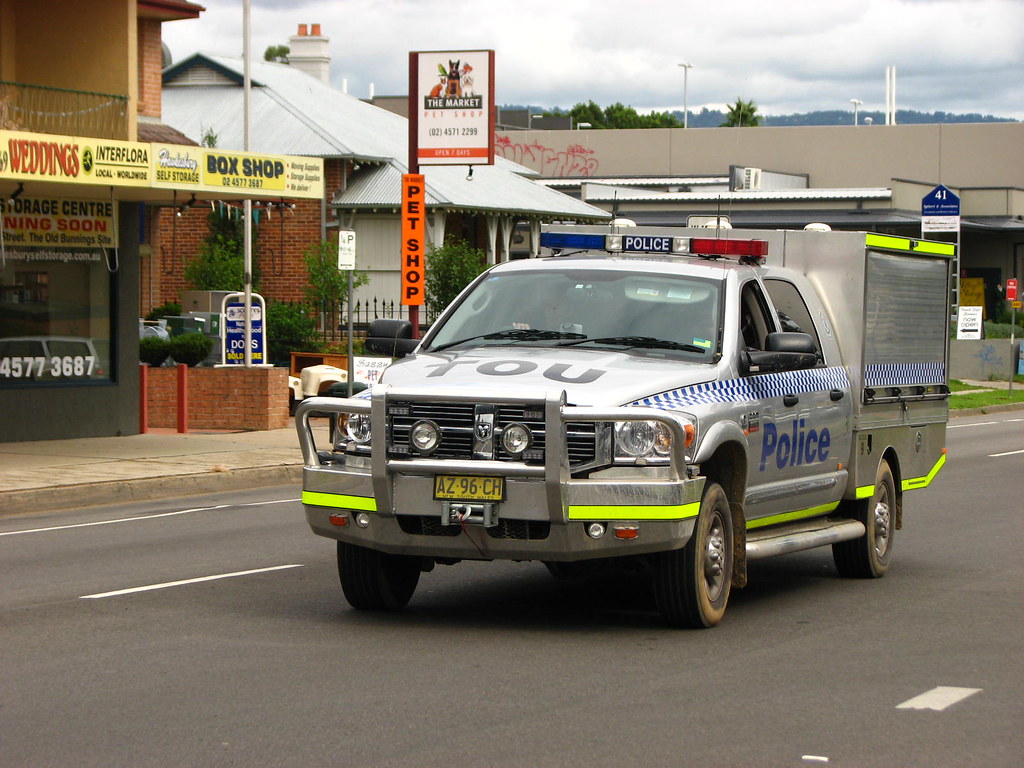
10. **2019–present Ram Durango Pursuit**While the mighty Dodge Ramcharger never received a factory police package, its spiritual successor, under the Ram brand, proudly continues Mopar’s legacy in the utility vehicle segment with the Durango Pursuit. This robust SUV represents the modern evolution of police vehicles, catering to agencies that require versatility beyond what a traditional sedan can offer. Ram initially dipped its toes into the law enforcement market with the Durango in 2012, offering it as a Special Service Vehicle (SSV) package. This early iteration, designed for police and fire departments, featured crucial upgrades to its electrical, cooling, and braking components, laying the groundwork for future advancements.
However, the initial SSV package, while competent, faced stiff competition and wasn’t quite able to go head-to-head with established players like the Ford Explorer-based Interceptor and the Chevrolet Tahoe PPV. Recognizing the need for a more comprehensive and competitive offering, Ram reintroduced the Durango in 2019 with the revered ‘Pursuit’ designation, signifying its full readiness for frontline police duty. This new model arrived with several significant enhancements, including a performance-tuned suspension for superior handling, an increased top speed of 118 mph, and a redesigned front fascia that incorporated dedicated cooling ducts for the brakes. Combined with standard all-wheel-drive, these features prepared the Durango Pursuit for extended high-speed driving and strenuous conditions, proving its mettle where it counts.
The Durango Pursuit’s interior is also thoughtfully optimized for police operations, blending functionality with officer comfort and K-9 unit support. It comes equipped with tri-zone climate control, a particularly beneficial feature for maintaining optimal temperature control for K-9 units, ensuring the well-being of canine partners during patrols. The front seating is specially crafted to accommodate officer service belts, providing enhanced comfort and ergonomics for long shifts. In the rear, durable hard plastic seats are installed for easy cleaning and security when transporting suspects, while the shifter is strategically moved to the column, liberating ample space in the center console area for essential police equipment, communication devices, and mobile data terminals.
Under the hood, the Durango Pursuit offers powertrain options tailored to agency needs. Departments can choose between the efficient yet capable 3.6-liter Pentastar V6 engine or step up to the more powerful 5.7-liter HEMI V8, which delivers up to 360 horsepower. This flexibility allows agencies to balance performance requirements with budgetary and fuel economy considerations. The seamless integration of these specialized features with powerful engine options solidifies the Ram Durango Pursuit as a versatile, dependable, and highly capable modern Mopar police vehicle, ready to tackle diverse roles from urban patrol to demanding rural operations.
Read more about: The Quest for Calm: Unveiling the Top 15 Quietest Midsize SUVs of 2024 for a Serene Drive

11. **1992–2001 Jeep Cherokee Pursuit**Long before the Ford Explorer Interceptor became the de facto SUV police cruiser, Chrysler, through its Jeep brand, offered a pioneering alternative for law enforcement with the 1992–2001 Jeep Cherokee Pursuit. This groundbreaking model, available with the AHB Police Package, was based on the legendary XJ Cherokee—a remarkably robust and enduring vehicle derived from the original AMC-designed platform first launched in 1984. The Cherokee Pursuit marked a significant departure from traditional sedan-based police fleets, signaling a growing recognition that some jurisdictions required the capabilities of a true off-road vehicle.
As with other Mopar Pursuit models, the Cherokee received a comprehensive suite of upgrades to transform an already durable vehicle into one ready for the rigorous demands of police work. Powering these specialized Cherokees was the legendary 4.0-liter AMC inline-6 engine, renowned for its bulletproof reliability and ample low-end torque. The police package further enhanced its capabilities with thicker sway bars for improved handling, a heavy-duty transmission cooler for sustained performance, and a column-shift automatic transmission, freeing up valuable center console space. Crucially, gas shocks and anti-lock brakes improved stopping power and ride stability, while electrical upgrades supported police-specific equipment. Perhaps most thrillingly, the removal of the speed limiter boosted the top speed to an impressive 120 mph, making it a surprisingly capable pursuit vehicle for its class.
Early testing conducted by the Michigan State Police proved to be an eye-opener for evaluators. The Cherokee Pursuit demonstrated excellent performance, particularly impressing in braking and acceleration tests, where it surprisingly outperformed contemporary police cruisers such as the venerable Crown Victoria and the Chevrolet Caprice. This remarkable showing underscored its inherent agility and robust engineering. Naturally, its standard four-wheel-drive system was a paramount feature, explicitly designed for officers in areas where traditional patrol cars would struggle to maintain performance or even become completely ineffective, such as rugged rural landscapes, inclement weather, or unpaved roads.
The Jeep Cherokee Pursuit proved to be immensely popular with officers across many departments who appreciated its blend of rugged capability and surprising on-road performance. Its legacy as a versatile police tool is undeniable, paving the way for the SUV’s widespread adoption in law enforcement. However, like many iconic vehicles, both the consumer and special service versions of the XJ Cherokee were eventually discontinued after 2001. Its intended replacement, the Jeep Liberty, unfortunately, did not offer a comparable Pursuit model, marking the end of an era for this particular Mopar icon that redefined utility and capability in police fleets.
Car Model Information: 2022 Jeep Cherokee X
Name: Jeep Cherokee
Caption: Fifth generation (KL)
Manufacturer: Jeep
Aka: Jeep Liberty
ModelYears: unbulleted list
Class: unbulleted list
Layout: unbulleted list
Chassis: unbulleted list
Categories: All-wheel-drive vehicles, Anti-Indigenous racism in the United States, Articles with short description, Compact sport utility vehicles, Crossover sport utility vehicles
Summary: The Jeep Cherokee is a line of sport utility vehicles (SUV) manufactured and marketed by Jeep over six generations. Marketed initially as a variant of the Jeep Wagoneer (SJ), the Cherokee has evolved from a full-size station wagon (before the SUV description came into use) to one of the first compact SUVs and into its latest generation as a crossover SUV.
Named after the Cherokee tribe of Native Americans in the United States, Jeep has used the nameplate in some capacity since late 1973 when American Motors Corporation (AMC) introduced the 1974 model year line.
Production of the Cherokee ended in February 2023. The Cherokee nameplate has since been used by the Grand Cherokee and its extended version, the Grand Cherokee L.
Get more information about: Jeep Cherokee
Buying a high-performing used car >>>
Brand: Jeep Model: Cherokee
Price: $25,000 Mileage: 26,492 mi.
Cruising through the annals of automotive history, it’s abundantly clear that Chrysler, Plymouth, Dodge, and now Ram and Jeep, have consistently delivered vehicles that are far more than mere transportation for law enforcement. From the pioneering days of dedicated police packages to the muscular, technologically advanced cruisers of the 21st century, Mopar machines have been integral to defining the image and operational capabilities of police forces across North America and beyond. They embody a unique blend of civilian innovation pushed to its limits, meeting the extraordinary demands of public service with robust engineering, uncompromising performance, and an undeniable presence. Whether it’s the roar of a HEMI in a Charger Pursuit, the off-road prowess of a Cherokee, or the iconic silhouette of a Monaco in cinematic fame, these vehicles stand as enduring symbols of authority, speed, and the relentless pursuit of justice. The Mopar legacy in law enforcement is not just a collection of cars; it’s a dynamic narrative of power, adaptability, and unwavering dedication.

